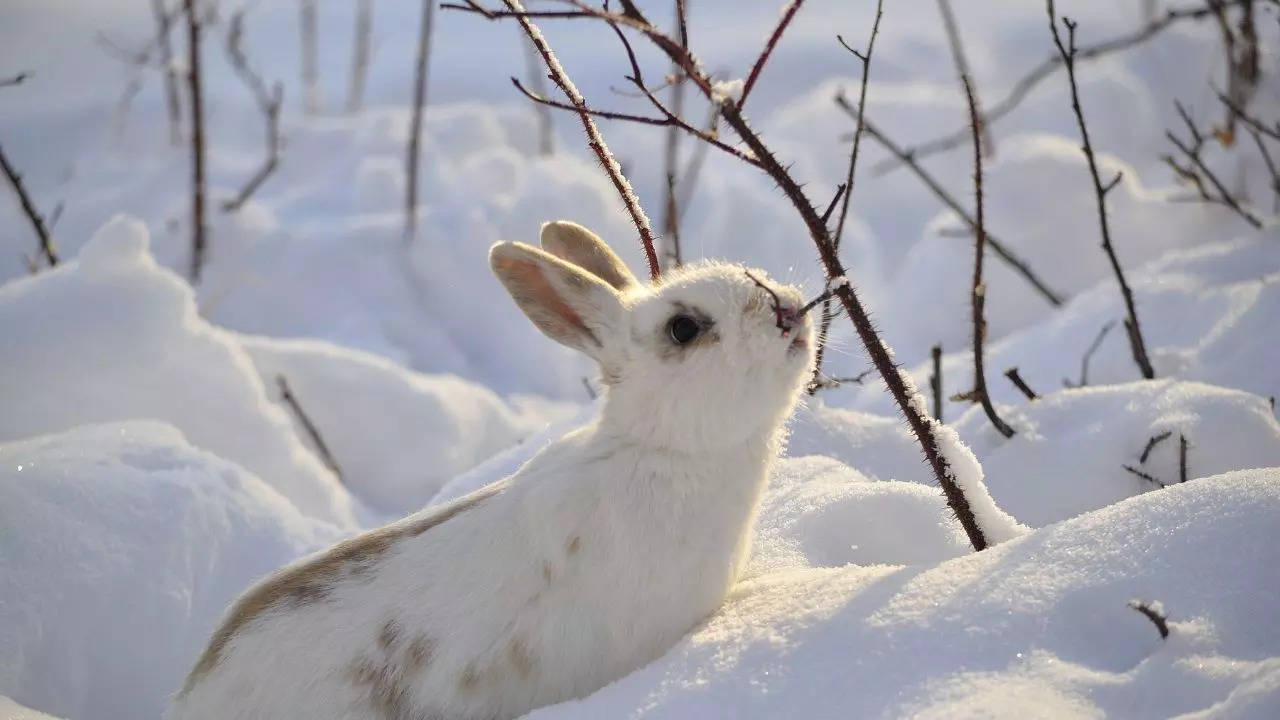
Fascinating animals that turn white in winter Nature is truly a gift from God, beautiful and surprising in every way. Did you know that some animals not only change their diets, sleep patterns, and sizes but can even change their color? Yes, that’s right! Some animals have the amazing ability to turn their coats white in winter, blending perfectly into snowy landscapes. It sounds like something from a fairytale, but it’s a real magic of nature.
Here are five animals that go through this remarkable transformation each winter. Collared lemmings Collared lemmings are small animals that live in the cold Arctic. In winter, their fur turns white, helping them blend in with the snow and stay safe from predators like foxes and owls.
The white fur also keeps them warm. In summer, their fur changes to brown or gray to blend in with the ground and plants. Lemmings are important food for many animals in the Arctic.
Weasels In winter, weasels, also called ermines, turn their brown fur white. This helps them blend in with the snow, so predators can’t see them as easily. The white fur also keeps them warm, helping them survive the cold.
By hiding better and staying warm, they can find food and stay safe more easily in the snow. Arctic foxes Arctic foxes are known for their white fur in winter. The white coat helps them blend into the snow, so they can sneak up on small animals and hide from bigger predators like wolves.
Their thick fur keeps them warm in the cold, and they even have fur on their paws to protect them from the icy ground. This helps them stay safe and comfortable in the harsh winter. Snowy owls Snowy owls have mostly white feathers that help them blend in with the snow.
This helps them stay hidden while hunting small animals like lemmings. Their feathers also keep them warm in the cold of the Arctic, where they live. Peary caribou The Peary caribou, which lives in the Arctic, grows a pale white coat in winter.
This helps them blend into the snow and stay hidden from predators like wolves and polar bears. Their thick coat keeps them warm in the cold, helping them survive harsh winters. They also have special paws that help them walk through deep snow and find food.
Visual Stories How to make protein-rich Paneer Paratha for breakfast Manushi Chhillar’s love for off-shoulder dresses is a true fashion delight 9 low-maintenance creepers that will add charm to your balcony From salt flats to floating lakes: India’s most dramatic landscapes How eating this simple homemade powder post dinner can bring down cholesterol levels 10 foods parents should avoid giving to kids aged 0-5 Krithi Shetty Stuns with Her Versatile Fashion Choices Samantha Ruth Prabhu stuns in her latest photoshoot Best anti-dandruff shampoos to fight white flakes this winter Bigg Boss Photostories Featured In lifestyle MORE FROM E TIMES.














